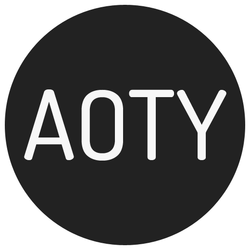Album of the Year (website)
Album of the Year, popularly known by the initialism AOTY, is a website that aggregates reviews of music albums. For each LP, a numerical score from each review is obtained and the total is averaged. An excerpt of each review is provided along with a hyperlink to the source. Ratings are averaged and albums ranked in a chart intended to give an overall picture of critical appraisal of current releases, based on the averaged score out of 100.
 | |
Type of site | Review aggregator |
|---|---|
| Owner | Robert Thomas |
| URL | albumoftheyear |
| Launched | 2008 |
| Current status | Active |
Many review websites give a review grade out of five, out of ten, out of 100, or even an alphabetical score. AOTY converts such a grade into a percentage.
In the media
AOTY is often used by magazines such as No Ripcord,[1] Drowned in Sound and Consequence of Sound to refer to their rating. On 13 February 2015 the website Consequence of Sound published an article about the "sophomore album slump".[2] Study organizers began with Rolling Stone's list of the 100 Best Debut Albums of All Time, published in March 2013. From there, they reviewed the aggregation website AOTY, comparing the scores of 80 debut records with their follow-ups. 66.25% of the time, the grades dropped, which the article took as evidence of the "sophomore slump" phenomenon.
Similar sites
The site is similar to other review aggregator websites such as Metacritic and AnyDecentMusic? in that it gathers reviews to assess critical acclaim.
Charts
Once an album or release has five reviews from different sources, it enters the current Best Albums chart.
See also
References
- "Want to keep track of all of our 2015 review scores? The folks at @aoty got you covered". Albumoftheyear.org. Retrieved 6 January 2018.
- "Proof the "sophomore album slump" is a real problem". Consequence of Sound. 13 February 2015. Retrieved 6 January 2018.